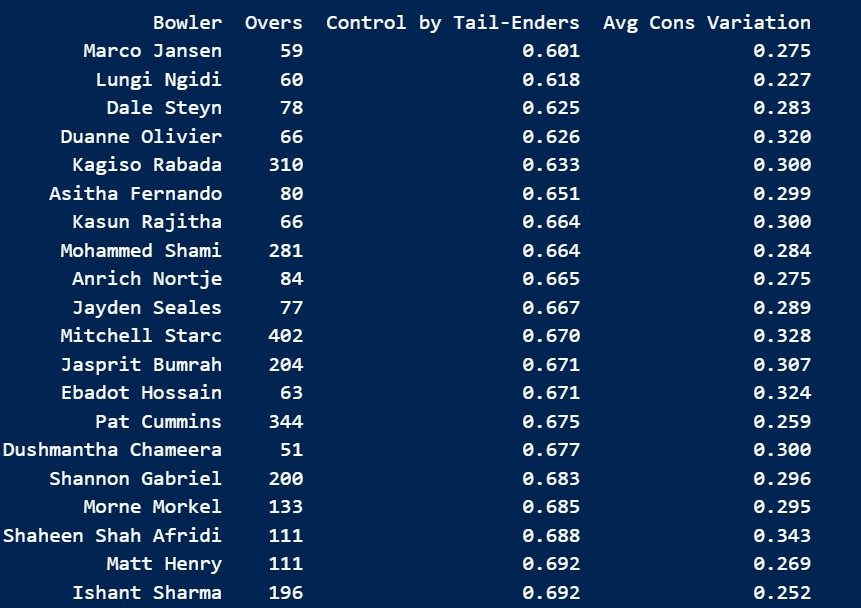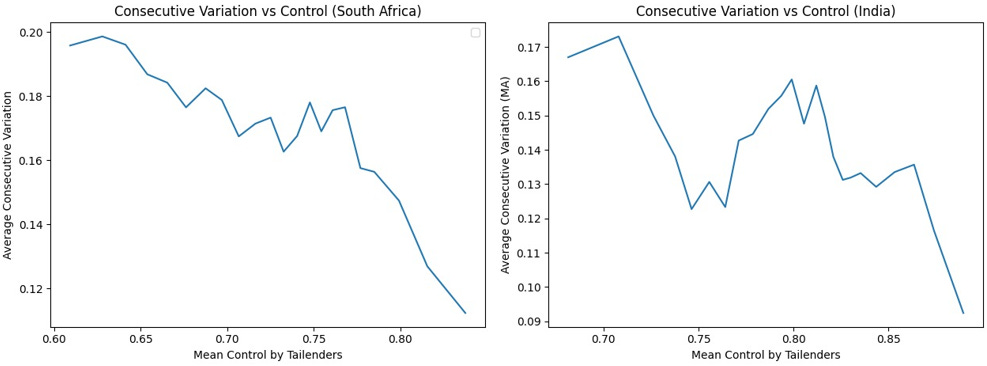Test Cricket meets a Variation Surprise
Analysing two cases where quick variations may help in tests.
Test bowling is about consistency, traditional top-of-off bowling. Aggressive line-length changes, though, can trouble batters in specific cases. That is what we’ll be analysing in this one—how these changes affect batters with age and how they can trouble tailenders.
Consecutive Variation Score
The net change in line and length was quantified between two consecutive balls by treating line and length as two different coordinates. The average distance between two consecutive balls of the over (which effectively become two points on a plane) is the consecutive variation score of that over.
(Data post 2015, test bbb maintained by Himanish Ganjoo)
Handling Extreme Changes: Age and Experience
Anticipation as a technique has a lot to do with judging sharp line-length changes. But are line changes and length changes the same in nature? No—both show opposite trends with experience.
Experienced batters tend to get out more on sharp length changes. Extreme line changes work well against less experienced batters. This relates to age : length changes require faster adjustments and greater attention, and the length spectrum is broader. With line, a batter is wired to focus most on balls targeting the stumps, leaving most outside off and all down leg—unlike varying lengths, where except a bouncer there's no such ball meant to be left
SENA vs Asia
The trend of playing length changes with experience is not a global phenomenon. In SENA countries, with the pace and bounce on offer, experience becomes more important than age-related physical decline. As expected, high variations in length in SENA troubled more than those in Asia for all age groups. The values though increased in Asia with experience while they decreased in SENA, showing problem increasing with age in Asia. Change was the most significant for highly experienced batters (12-14 years) in both cases.
Tailenders and Troubles with Line-Length Changes
A tailender making 30 runs can probably frustrate more than a top-order century. Are there patterns in where tailenders struggle? Sharp changes in line and length is one. We’ll examine this through data and discuss the implications. I have considered batters batting below number 7 as tailenders.
Control vs Consecutive Variation for Tailenders
Tailenders’ control values have shown a decreasing trend with increasing consecutive variation. This trend does not hold for batters in the top 6, who can probably anticipate better. One example is the use of short balls. Short balls have been most effective in taking wickets against tailenders when delivered after a full toss (strike rate of 12). For batters in the top 6, delivering a short ball after a short of good-length delivery is most effective (strike rate of 48).
Pitch Effects : South Africa vs India
There must be a reason the top five bowlers in this list are South African: the pitches. Variable bounce adds to the surprise factor of sharp line-length changes.
Batters in the top 6 have a bigger challenge in new ball swing than the line-length changes, and hence their control values are lowest in England. Indian pitches also vary significantly in where they stand on control values of top 6 and tailenders. This has to do with tail enders struggling more against pacers (more aggressive line-length changes, average control of 0.7) as compared to spinners (control 0.8). Among bowlers with more than 10 overs, the correlation between variation and control was –0.58 (a very strong value given how noisy a cricket environment is; negative indicates control decreases with variation) in South Africa. In India it stood at –0.35.
I feel these variation scores can help uncover a lot of fascinating insights. I picked two of them in this one and will be coming up with more. Do subscribe if you liked what you read.













